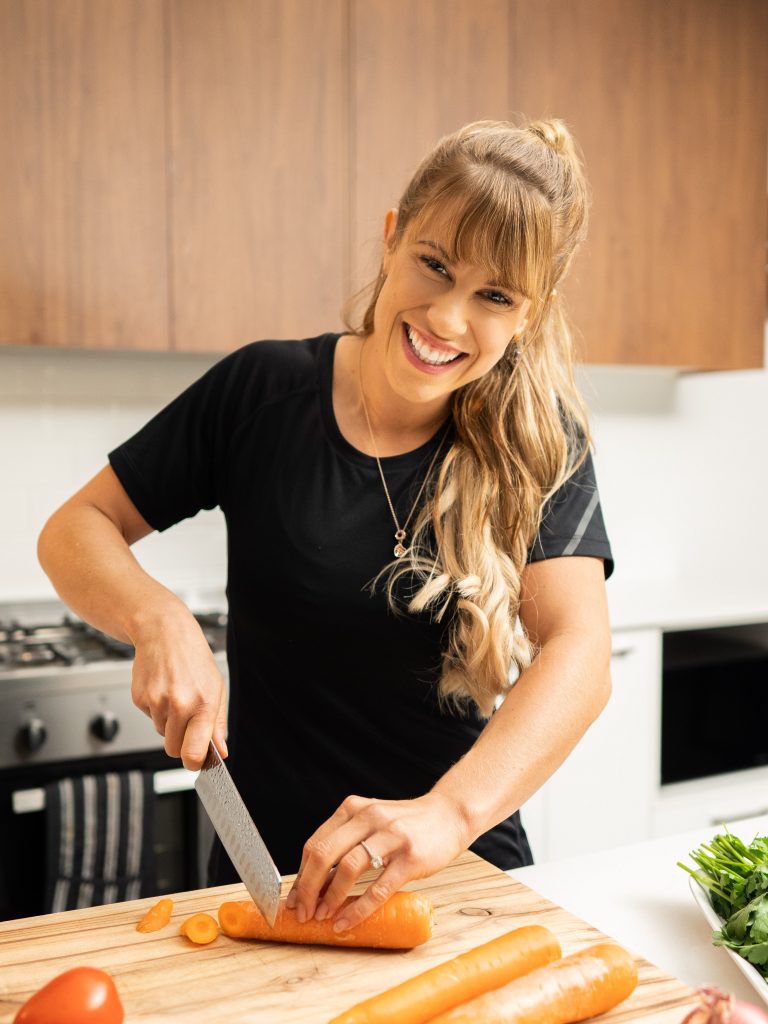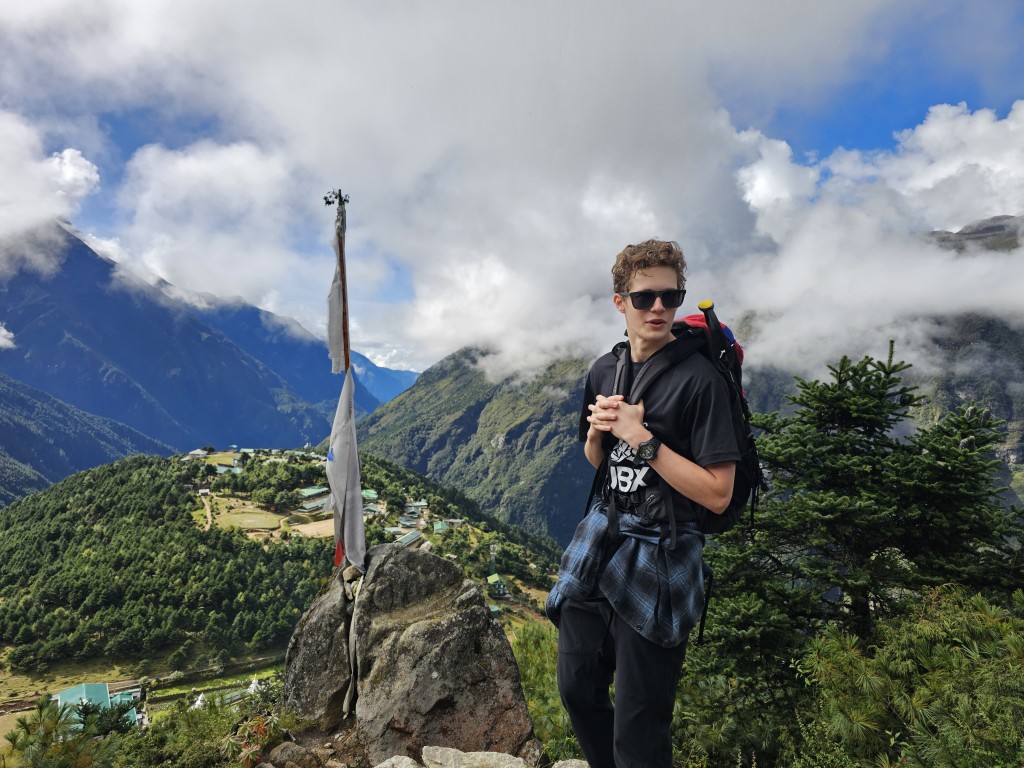Boxing is one of the most physically demanding sports in the world, but it’s also one of the most rewarding and effective for results. Although boxing will challenge you, it’s also highly adaptable to suit any skill or experience level and offers endless progression. If you’re new to boxing, it might seem like a lot to take in, so we’ve put together the below article to break down the basics of boxing as both a sport and form of fitness, and how to get started as a beginner.
What do you need to wear for boxing?
Boxing Gloves
As you might expect, the first piece of equipment we recommend is: Boxing Gloves.
For UBX, we recommend a 10oz weighted boxing glove with a velcro strap which is the perfect weight for both bagwork and padwork with coaches, and the velcro strap makes it easy to put gloves on and take them off between boxing rounds.
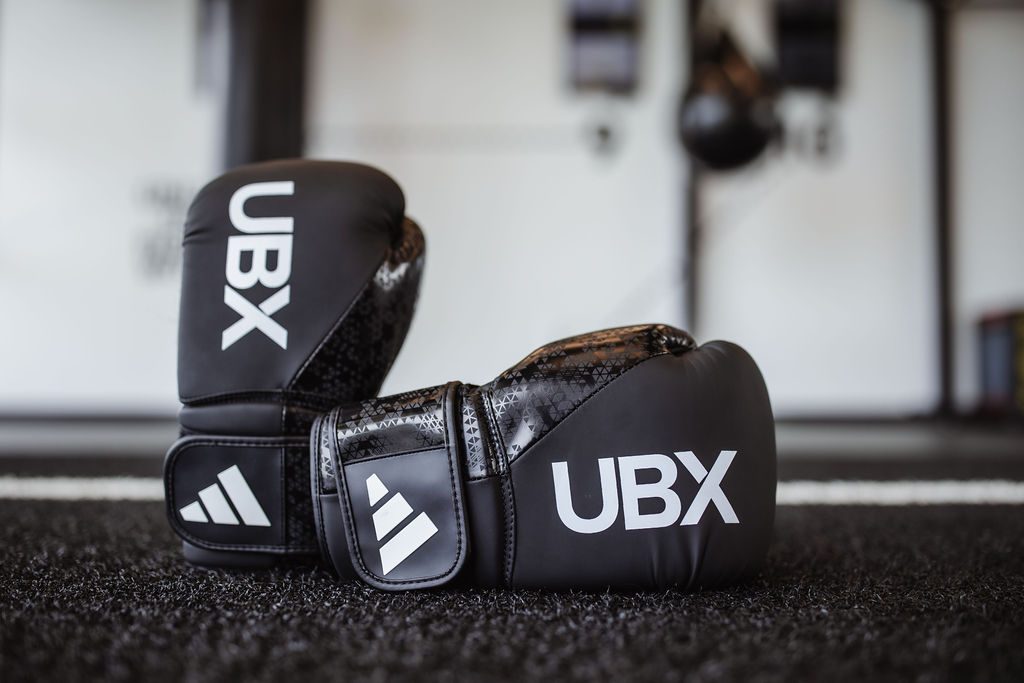
Available exclusively at UBX gyms globally.
Hand Wraps
You’ve probably seen boxers before a fight having their hands wrapped or tapped up before their gloves are put on. This layer of padding is designed to protect your hand and knuckles inside your gloves.
Professional fighters use any combination of fabric, tape and gauze to protect their hands – but at UBX, we recommend either a short fabric hand wrap with a velcro fasten, or a quick wrap.
Whatever you choose, how the wrap protects your hand is what’s most important. When using a fabric hand wrap, you should make sure that you sufficiently protect your knuckles. Similarly, when using quick wraps, make sure that the padding is not only only the back of your hand, but also across your knuckles when you ball your hand into a fist.
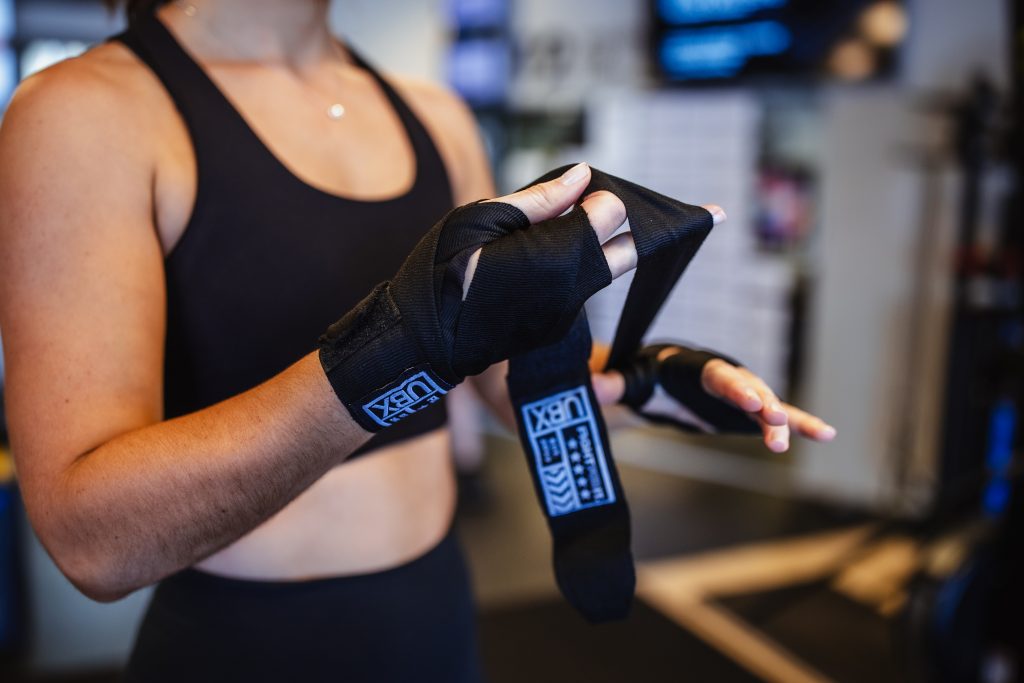
The UBX hand wraps are shorter than traditional hand wraps so that they’re faster to put on yet still provide sufficient padding inside your boxing glove. 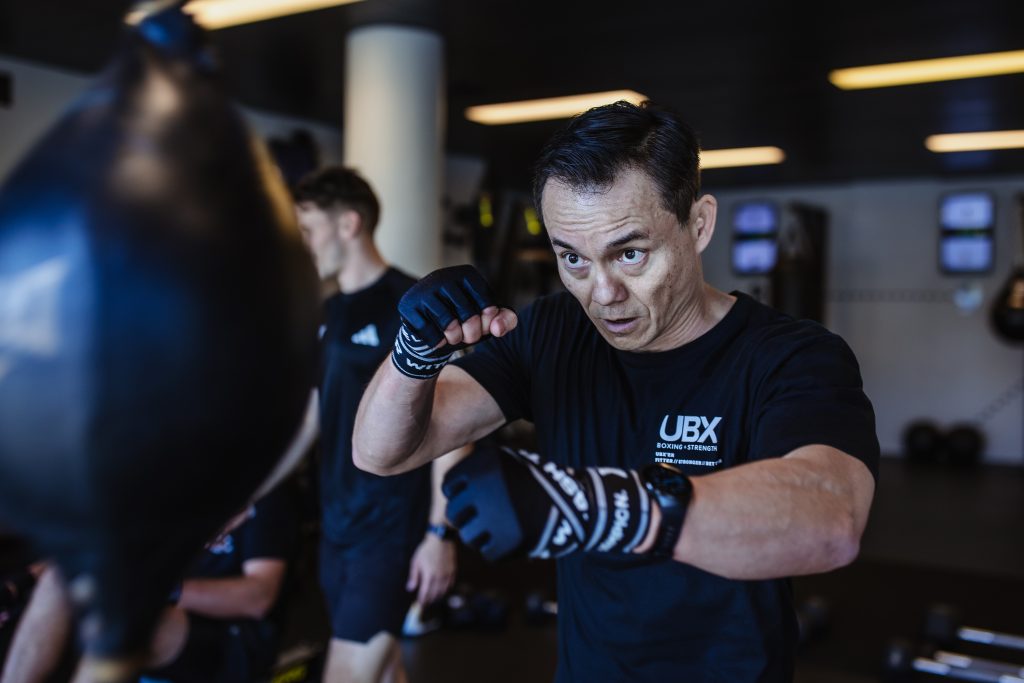
The UBX quick wraps come with padding across the knuckles for optimal protection.
Activewear and Footwear
You might see professional fighters in a specific style of active wear, often including an elasticated short with a slightly longer leg and the traditional lace-up boxing shoes with a smooth bottom and low heel. This clothing and footwear is designed for continuous footwork and boxing on a padded boxing ring floor, so what you choose to wear depends on whether you’re training, sparring or fighting, and if you’re purely boxing or doing any other forms of exercise combined.
Activewear: When you’re just getting started, or if you’re training in a mixed workout environment like UBX’s boxing and strength gyms, it’s best to wear something that’s moisture wicking and comfortable but well fitted to your body to giving you free range of motion without the bulk of your clothing getting in the way or stopping you from cooling down.
Footwear: Whilst you’re training, a simple training shoe is fine, especially if you’re mixing in other methods of exercise into your routine (eg. weights, resistance, plyo, etc). You might even find something that offers a bit more sole support, suited to your foot-type will be the most ideal because it will provide you a bit of bounce and spring for power movements, whilst offering balance and support for weighted movements.
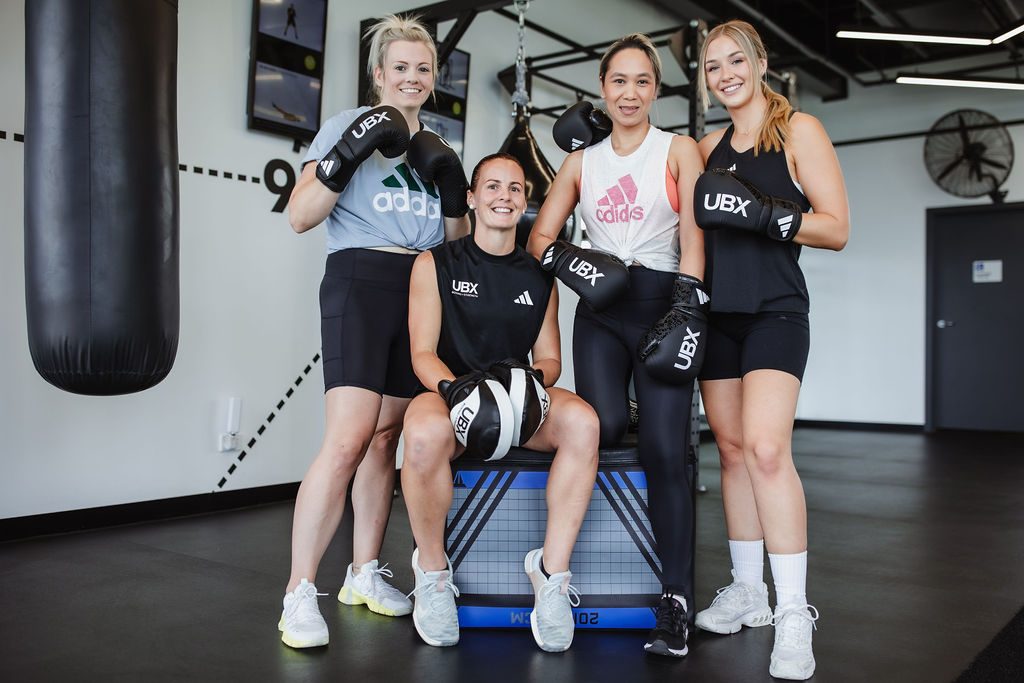
Understanding the Equipment
In a boxing gym, you can find an entire collection of different types of training gear – each with a different focus and purpose.
At UBX, below are the main boxing equipment you’ll find in our gyms:
Heavy Bag: This is your traditional boxing bag, designed to withstand powerful punches. It helps you develop power, endurance, and technique. The resistance provided by the heavy bag allows you to work on your punching strength while building muscle and burning calories.
Aqua Bag: Similar in purpose to the heavy bag, but filled with water instead of air, the aqua bag offers a different kind of resistance. The water adds a fluid movement to the bag, which absorbs more of the impact and is easier on your joints. This makes it ideal for refining your technique and improving punch accuracy.
Floor-to-Ceiling Bag: This bag is suspended between the floor and the ceiling with tight elastic cords. It moves quickly when struck, helping you sharpen your speed, reflexes, and timing. It’s perfect for developing quick, snapping punches and defensive moves.
Speedball: A smaller, faster-moving bag, the speedball is all about rhythm and coordination. It rebounds rapidly, teaching you to keep a consistent pace and improving your hand-eye coordination. The speedball also helps with shoulder endurance and overall hand speed.
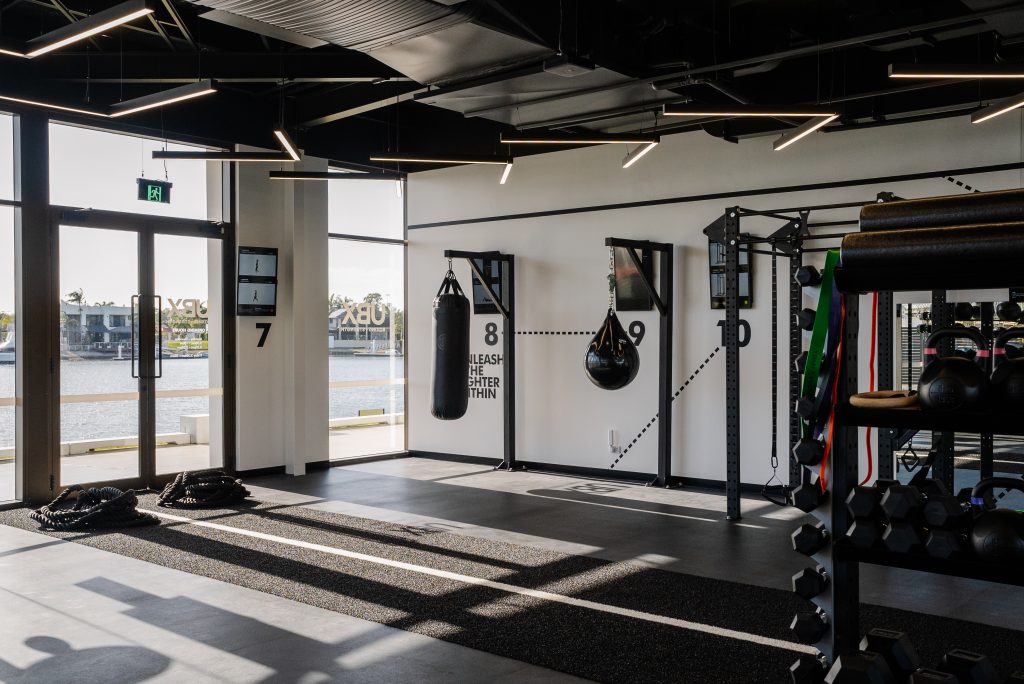
The Basics of Boxing
Stance
Think of your Boxing Stance as the “base” of everything that you do. The right technique can make all the difference in how you generate power and speed, and how agile you are through each movement.
- Imagine a square on the floor and put your feet in opposite corners of the front and back of that square. The foot that goes forward is the opposite to your usual dominant hand, whilst the other goes back.
- If you’re usually right-handed, you would put your left foot forward – this stance is called “Orthodox”
- If you’re usually left-handed, you would put your right foot forward – this stance is called “Southpaw”
- Whichever side has a foot forward is also the side of your “Lead Hand”, whilst the other is your “Rear Hand”. When your hands are up in “Guard” your lead hand is placed in front, hovering between your eye and your chin, whilst your rear hand is close to your ear and chin, like it’s holding a telephone.
- Keep your knees slightly bent and flexed to ensure you have a little bit of bounce to your step, and keep your back keel up slightly so that the weight is mostly in the ball of your foot.
Stance can also vary depending on your personal boxing style, and finding the right stance takes patience – practise makes perfect!
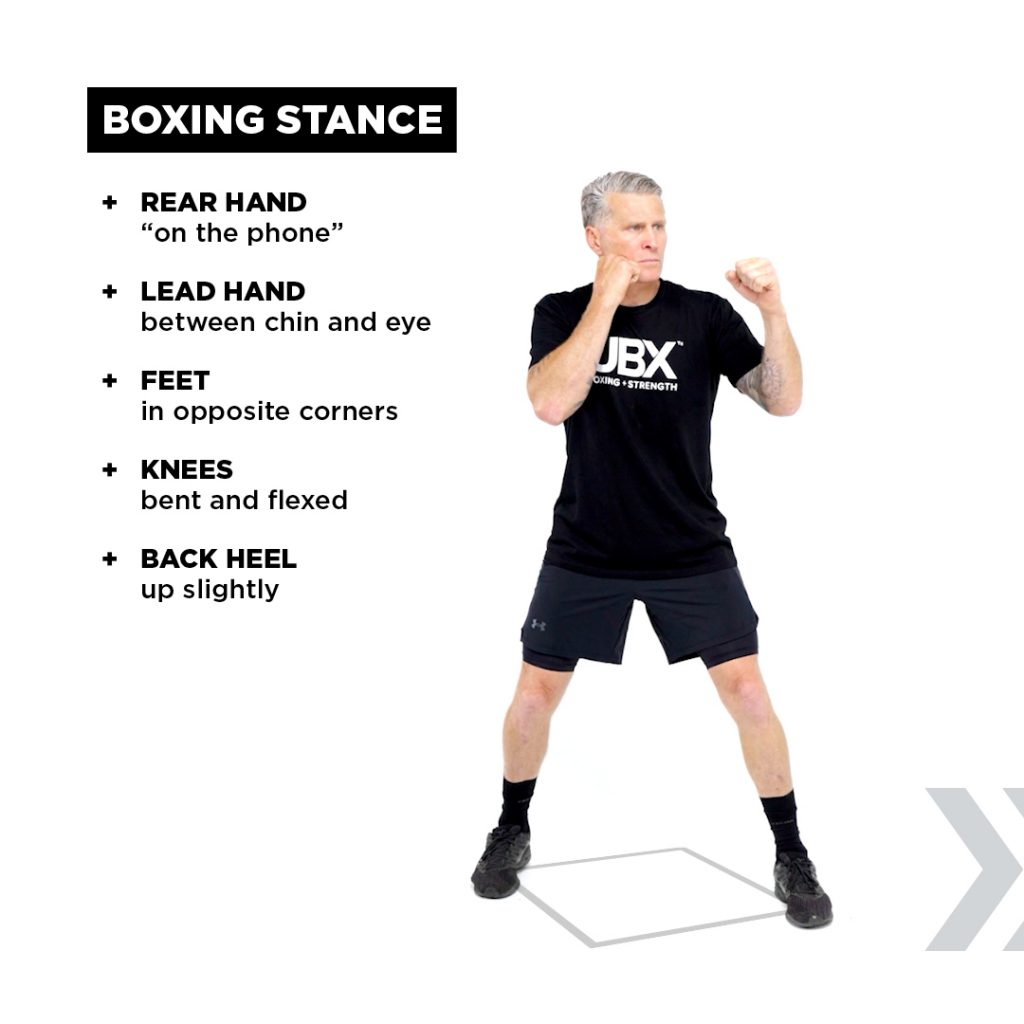
Jab
The Jab is one of the most important punches in a boxer’s repertoire for building range, establishing position and setting up power shots.
- Your stance is crucial – stay balanced and keep your weight evenly distributed
- Generate momentum and speed by shifting your weight
- Let the motion travel from your back foot, through your hips and into your punch
- Extend the punch – keep your elbow tucked, your wrist square and fist straight
- Snap back – remember to bring your hand straight back into your guard
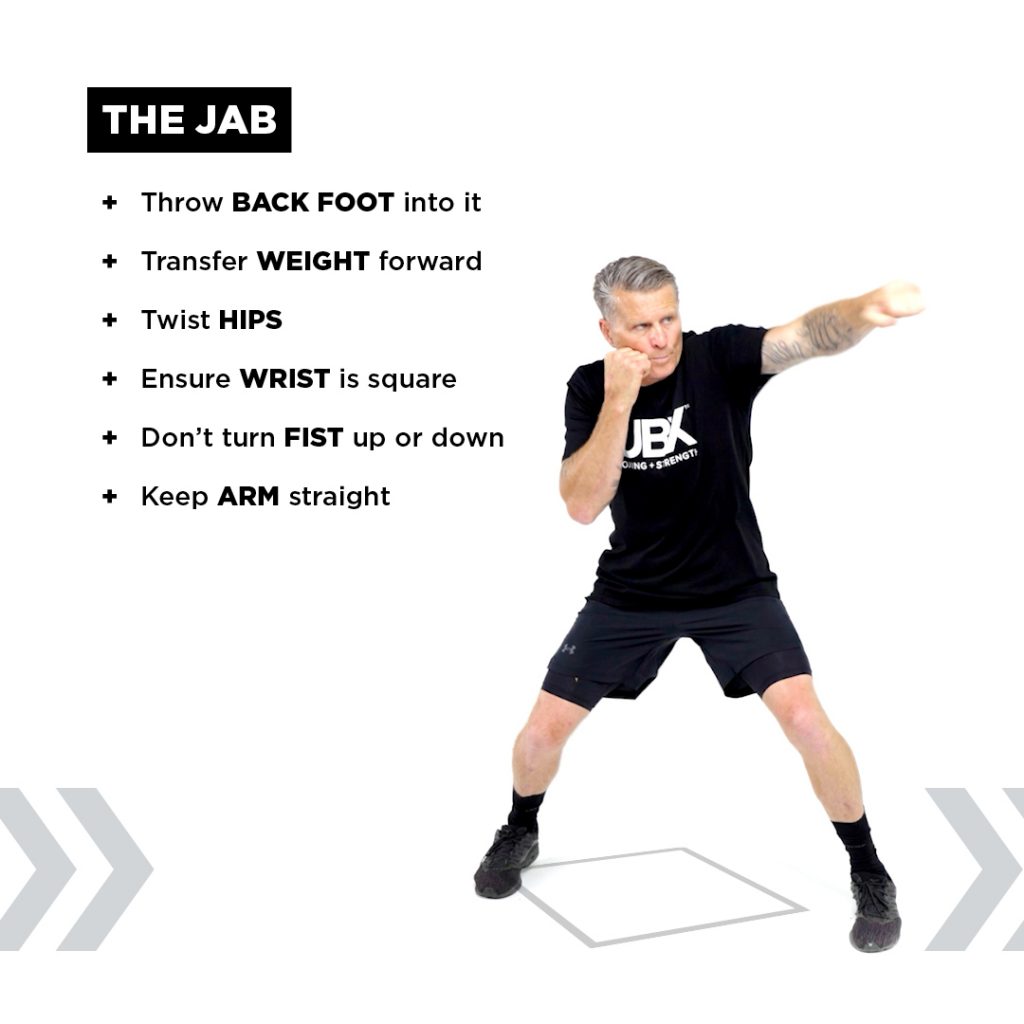
Cross
The cross is a very powerful punch, and is known to be an effective knockout blow. Many of our combinations end with a cross, utilising the punches immediately before it to set yourself up in a way that maximises power.
- Keep your arm straight and throw the cross in a straight line from your initial starting point, towards your target
- Maintain a steady base and generate power from your feet, exploding forward and shifting your weight through
- Let the motion travel from your back foot, through your hips and into your punch, twisting to achieve a full extension
- “Turn the punch over” by keeping your wrist square and creating impact and connection with your first two knuckles
- Snap back – remember to bring your hand straight back into your guard
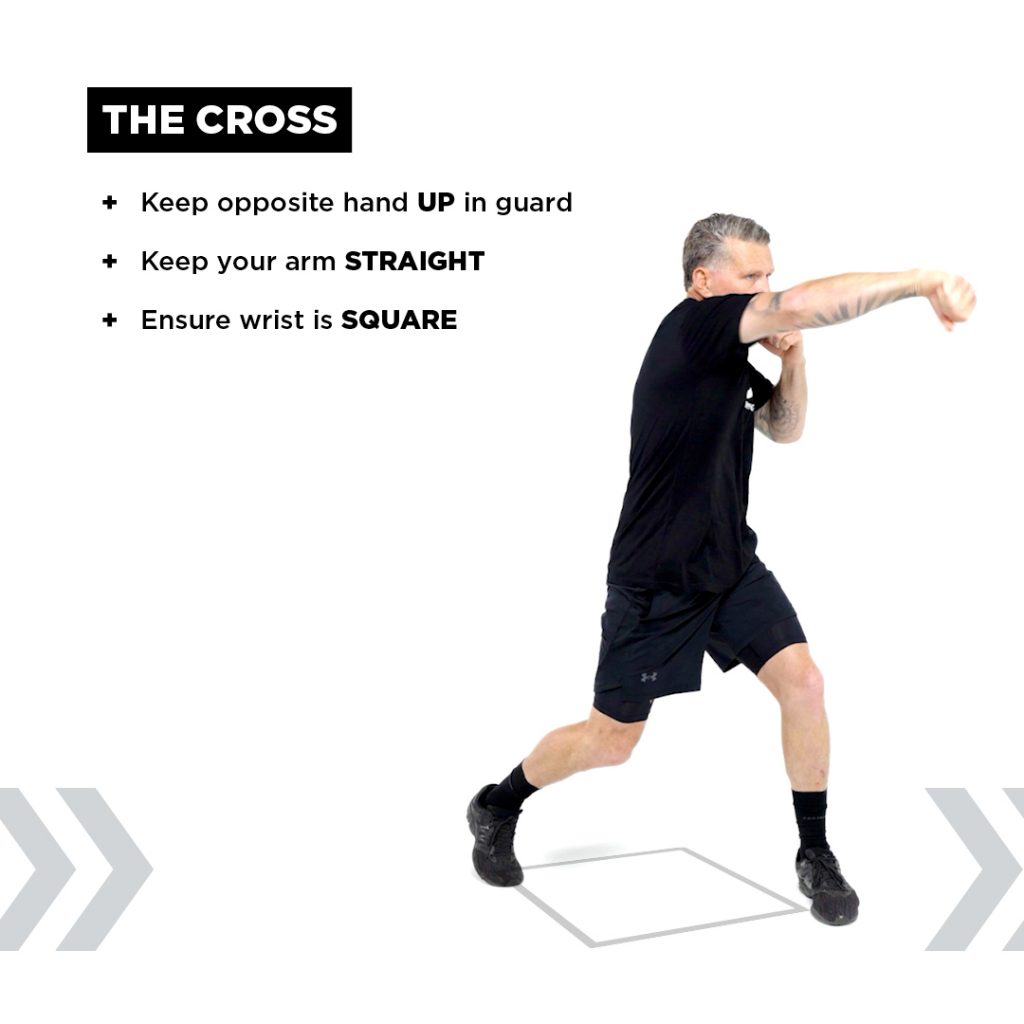
Hook
The Hook is a punch that’s thrown across your body in a curved motion, starting with your elbow bent at a right-angle and punched out and into your opponent, following through with your body, using your core and shifting the weight on your heels to create power.
This punch can be thrown either as a “Lead Hook” or a “Rear Hook” and is a powerful close-range attack typically used to target your opponent’s head or body.
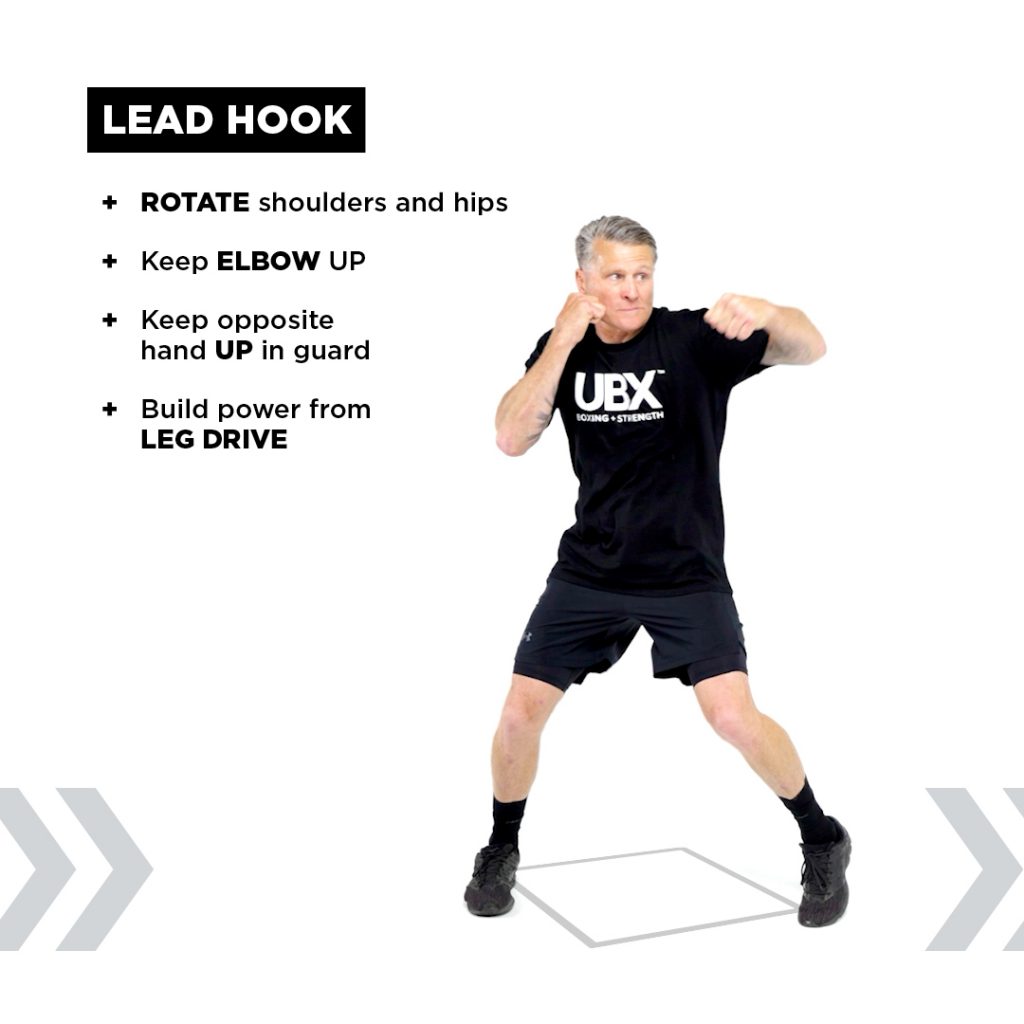
Tips on a Lead Hook from our Co-Founder, Danny Green 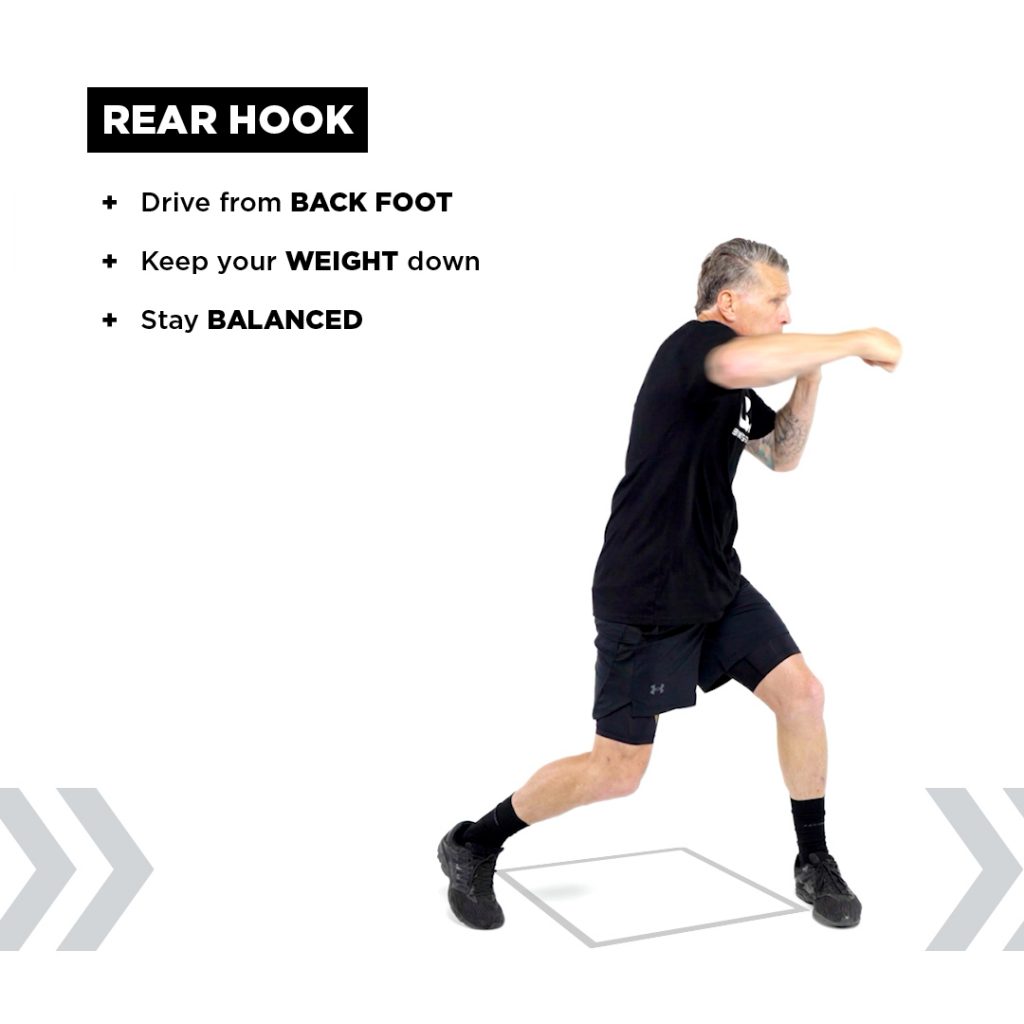
Tips on a Rear Hook from our Co-Founder, Danny Green
Uppercut
The Uppercut, as the name suggests, is where you throw your punch in an upward blow. This is often a trickier punch for beginners and takes time to master. Usually used during close range, and sometimes mid-distance, when you’re facing an opponent, the aim is to cut through their guard and land the punch on the lower point of their chin.
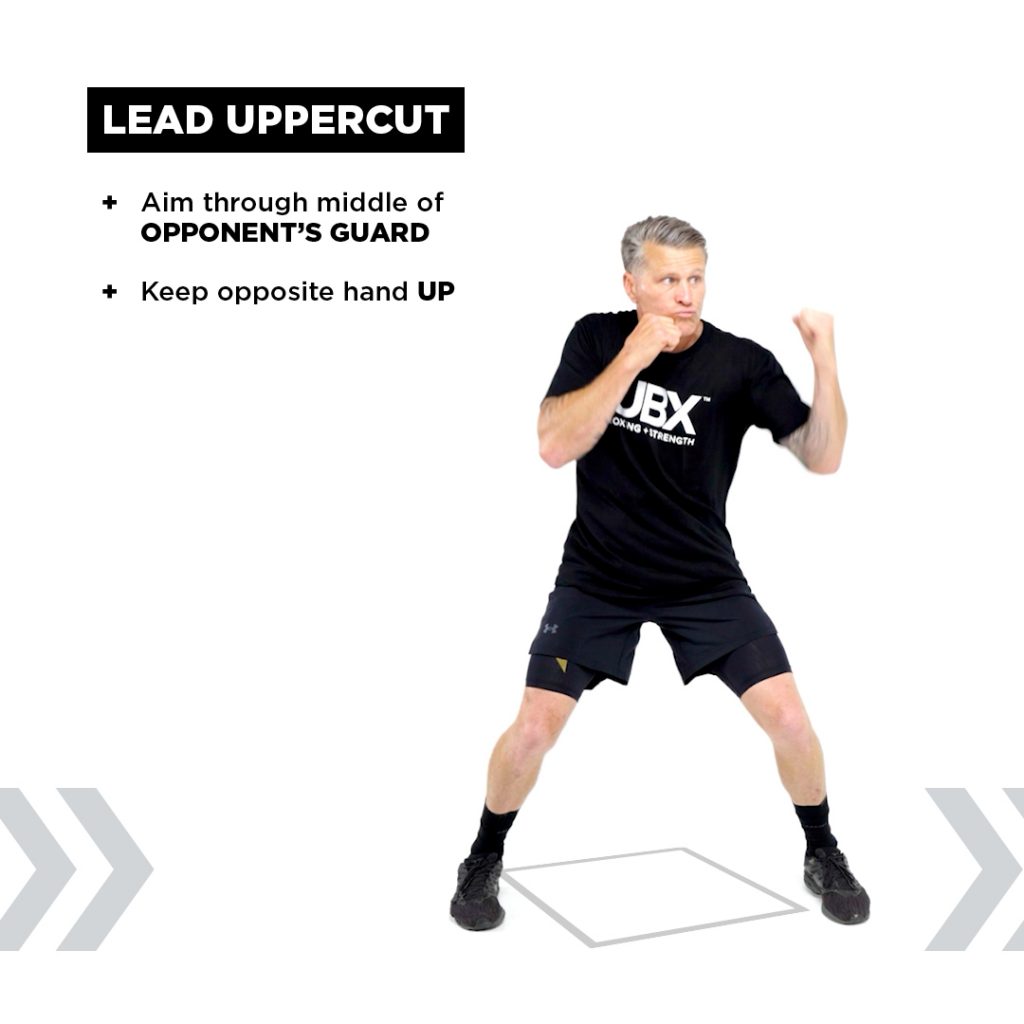
Tips on a Lead Uppercut from our Co-Founder, Danny Green 
Tips on a Rear Uppercut from our Co-Founder, Danny Green
Rip
A Rip is predominantly used as a counterpunch thrown after an evasion. Think of it as an in-between of a hook and an uppercut – designed to be punched at an angle, across the body and in an upwards motion. Sometimes known as a “Body Hook”, rips are designed to target the torso, and require you to change levels slightly, using a bend in your knees and twist of your torso to explode upwards and into the punch.

The beauty of boxing is that you can start with the basics and continue developing the skill long-term because there’s no limit to your progression.
At UBX, we have trained coaches who can work with you on basic boxing stance and technique, and help you improve over time at your pace. Our coaches will also ensure that you can modify workouts to suit your current level of fitness and identify ways to encourage your strength progression. It’s a great way to get started, especially if you want to enjoy the skill development of boxing without having to fight or spar other members.
Let’s get the gloves on and see what’s possible
